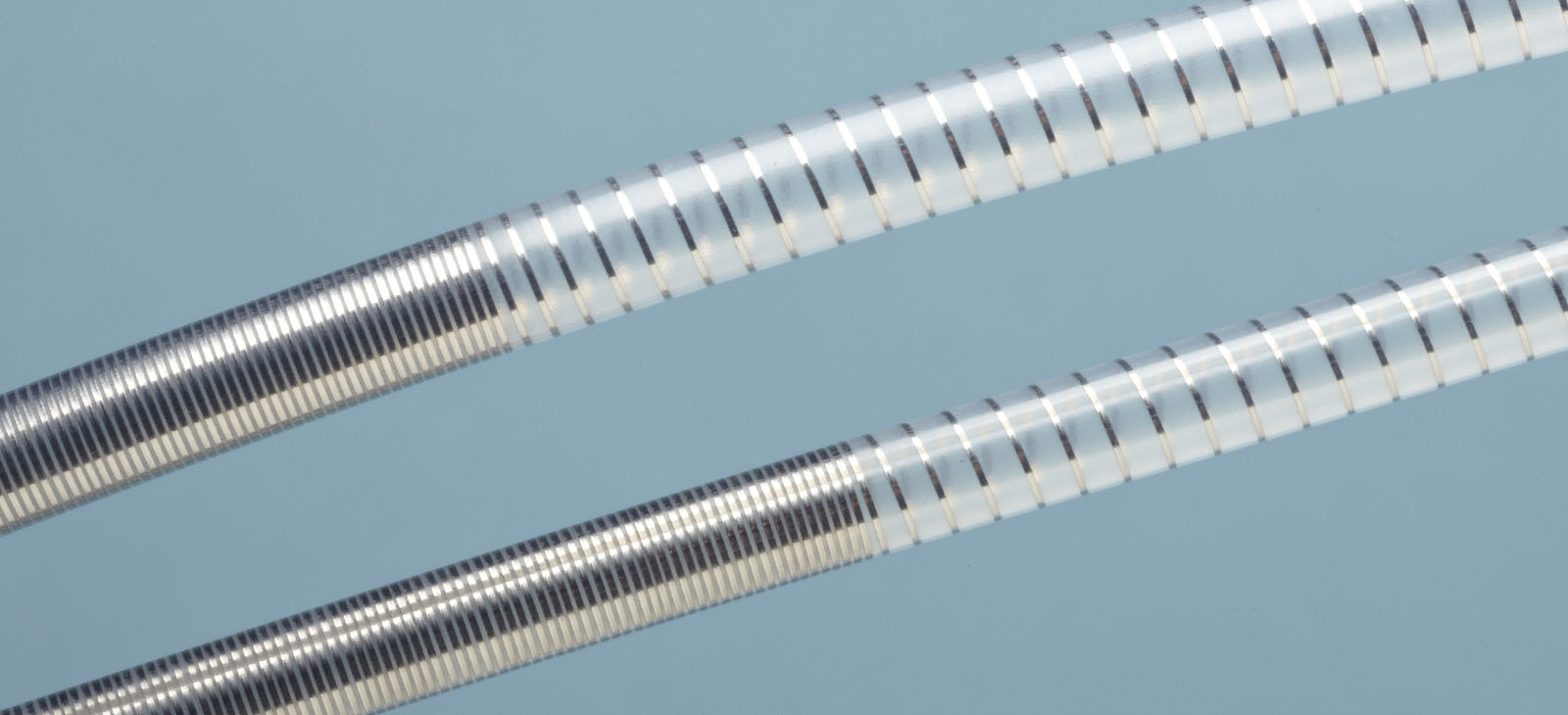
To those who are not aware of the term, catheter intervention is a non-surgical procedure that helps to cure various diseases. Offering commercial and clinical assets, it is being widely used in the health care industry. To precisely use a catheter for handling operations, it is important to understand the mechanical properties of the catheter shaft. However, there is not any typical testing method described for its mechanical properties. Here we will get to know about a scheduled calculation method for the mechanical properties of the catheter shaft under cyclic bending. These cyclic bending tests were conducted to have a comparison of mechanical properties of its three varieties, one of which is the outer layer of the shaft, and the other two are steel-ribbon and W-ribbon shaft. The folding dislocation was decided on the basis of load difference, which simply means the maximum load of each cycle. This is followed by a fine element analysis (FEA) which examines the cramp behavior of the catheter shaft during a three-point bending test. Let us know how the cyclic bending tests was compelling for the comparison of different catheter shafts!
About Catheter Mediation
Catheter Mediation is considered one of the potent methods to treat diseases like constriction and apoplexy. What has made its popularity as it is intrusive and has less surgery time than CABG. In PTCA, a catheter shaft is infused into either femoral or brachial artery, followed to the main artery passage and reaching the bruised part in the coronary artery. Also before the final mark, the catheter shaft passes through the convoluted arteries and inflicted complicated loading histories. It is important to have an idea about the mechanical properties of the shaft to avoid its bending and perforation. Describing the required mechanical properties, it includes tensile strength, twisting resistance, flexibility, and torque transmission attributes.
Materials Used
A catheter shaft has 3 layers, out of which one is resin film to improve the inflexibility of the shaft and surface slidability, the middle layer is a metal mesh which is inserted to improve the torque transportation of the shaft. The inner layer is a thin resin tube that provides indecency inside the shaft. There are 3 kinds of samples produced in the study, one is the outer layer, the other is a steel-ribbon catheter shaft, and a tungsten-ribbon catheter shaft.
Product Design Information
The design of a catheter includes functional requirements that allow the designer to classify the performance needs like flexibility, kink resistance, push strength and torque transfer components. Also, for the development of an optimum catheter design, you must have knowledge of the catheter technologies to obtain the required characteristics. Have a deep insight into the layer-by-layer approach to design deliberations!
Simply, a fortified catheter design is made up of an inner liner layer, a central supporting layer, and an outer polymeric layer.
Inner Liner Layer
You need to consider both material benefits and design considerations before selecting a liner material. Though there is a settlement with every material, the key point is finding the demand for the catheter application. The different liner material has different benefits and design considerations.
Central Layer
There are two different types of catheter support – one is braided and the other is coil. Dutch Technology Catheters OEM offers fiction technologies with both to improve the tensile profit of a reinforced catheter. What this include is the inclusion of the long -term, augmented components in a variety of materials like flexibility, advanced fibers, and high-tensile.
Outer Layer
The selection of the outer layer heavily urges the tensile produce, rigidity, and the catheter pushability. It may be multiple materials or durometers.
